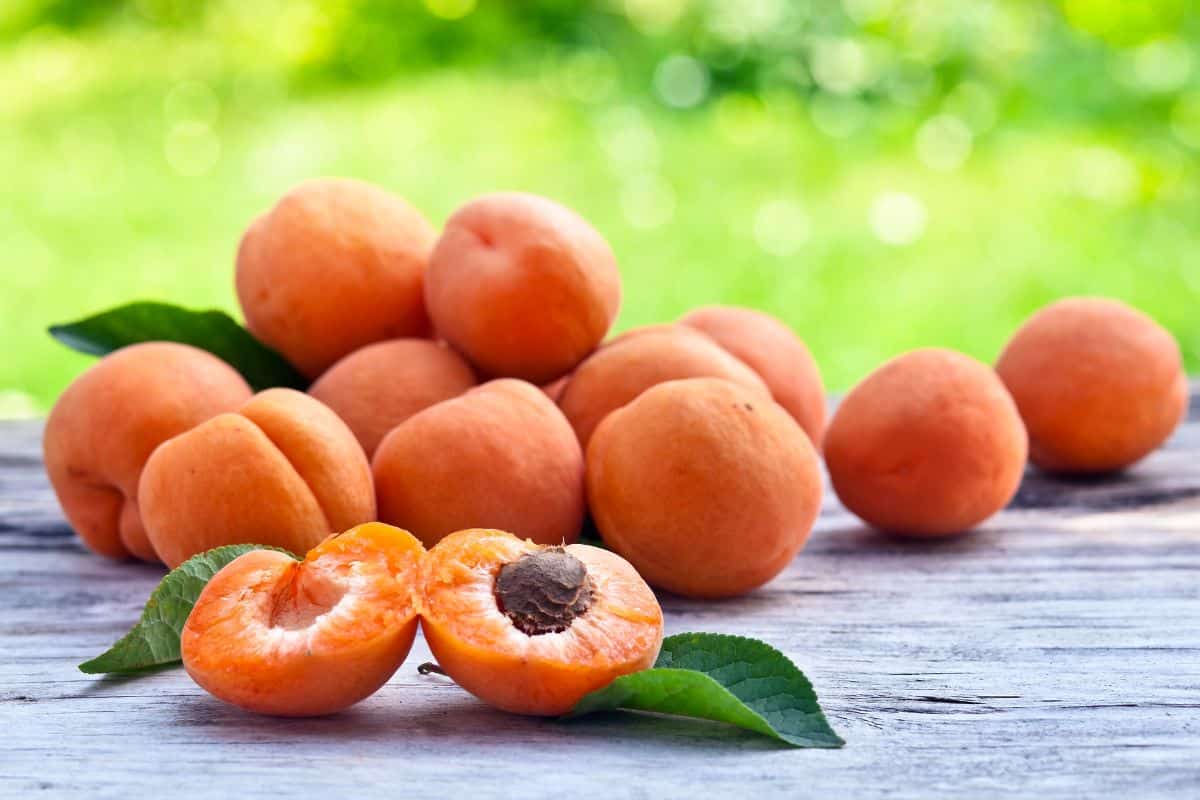What is it about fruits that are the color orange that make them so good for you? Not only are they healthy, but they add great color to your salads, winter dishes and fruit bowls.

We are going to look at some fruits that you are probably familiar with, some that you may never have heard of and other fruits that may confuse you slightly.
Whether you are looking for a healthy snack or something to make a dish pop with color, these orange fruits have got everything that you need.
Oranges
Perhaps the most obvious fruit that is the color orange is an orange. This citrus fruit is packed full of vitamin C which is great for boosting your immune system.
Oranges also contain many phytochemicals which help to support the body and protect against conditions like heart disease and cancer.
They are also believed to have anti-inflammatory, antimicrobial and antiviral benefits. So they’re tasty and good for you.
Tangerines
Tangerines are a part of the mandarin family and just as full of vitamin C as oranges. They are also a good source of flavonoids which help to lower the risk of chronic illnesses and fight inflammation.
The peel and fruit of the tangerine also contain lots of fiber, vitamins, minerals and water. All of these things promote heart health and good digestion.
Kumquats
The cute kumquat is also packed with vitamin C and is a good source of vitamin A. The skin is full of antioxidants which help to protect your cells against free radicals. Kumquats are also rich in dietary fiber.
Water is one of the main constituents of kumquats so eating them helps you to feel full for longer and so encourages weight loss.
Mandarins
Mandarins contain more beta carotene and beta cryptoxanthin than regular oranges. Beta carotene and beta cryptoxanthin are converted into vitamin A by the body.
Vitamin A is essential for normal growth and development, good vision and a healthy immune system.
This fruit is a great source of both soluble and insoluble fiber. Soluble fiber helps lower cholesterol and balances blood sugar while insoluble fiber aids digestion.
Peaches
This fuzzy fruit is low in calories and a moderate source of vitamin C and vitamin A. They are also a great source of dietary fiber with one peach giving as much as 6-9% of the fiber that your body needs each day.
While not everyone enjoys the fuzzy skin, they can be peeled and enjoyed without the skin, although you may lose some of the fiber this way.
Apricots
As an orange colored fruit, apricots are rich in beta carotene, and vitamin A making them great for supporting eye health. They also contain lutein which promotes good retinal and lens health.
They are also a good source of soluble fiber which boosts your digestive health. Eating 100 grams of apricots will provide you with 6% of your daily potassium requirement.
Persimmons
Persimmons are rich in vitamins A and C but are also an excellent source of manganese which helps blood to clot. This fruit is also rich in flavonoids which are antioxidants and may help to protect against heart disease.
Available over the winter months persimmons can supply potassium, and phosphorous as well as vitamin C. They are low in calories and high in fiber.
Nectarines
For those who don’t like peach skin, nectarines are the perfect solution with their smooth outer layer. They are also full of antioxidants, and can supply a third of your daily requirement of vitamins A and C.
Nectarines contain niacin which is great for healthy skin and also provide potassium. They contain 85% water so are good for hydration and helping you feel full for longer.
Papayas
The delicious orange flesh of the papaya is so good for you, it is full of nutrients including vitamins A, C and E. It also has high levels of antioxidants which may reduce the risk of heart disease.
Antioxidants also prevent the oxidation of cholesterol. Oxidized cholesterol is more likely to cause blockages which can lead to heart disease. Papaya is also full of fiber.
Blood Oranges
Blood oranges are high in vitamin C just like regular oranges, but they also contain anthocyanins. These help to reduce inflammation and fight off free radicals which are damaging to your body’s cells.
This fruit is also high in vitamin A, folic acid and calcium. As an orange fruit, blood oranges contain beta carotene which is beneficial for your skin.
Cantaloupe
Cantaloupes are packed with antioxidants such as beta carotene, zeaxanthin, cryptoxanthin and lutein. These help protect the health of your cells. This fruit also contains almost 100% of your daily requirement of vitamin C which supports your immune health.
You will be well hydrated when you eat cantaloupe as it contains 90% water. This can also help with weight loss as you will feel full for longer.
Winter Squashes
We know what you’re thinking, this guide is about orange fruits and winter squash is a vegetable. Actually, a squash is botanically a fruit as it develops from a flower and anything that develops from a flower is considered a fruit.
For cooking purposes however, it is normally considered a vegetable. But either way they are good for you, being full of alpha and beta carotene which converts to vitamin A. They are also a good source of vitamin C and fiber.
Orange Peppers
Like winter squash, peppers are botanically a fruit, but more than that, they are full of health benefits. Peppers contain vitamin A, vitamin C and potassium as well as being a great source of iron, and fiber.
Peppers also contain vitamin B6 which along with folate help to reduce homocysteine levels, an amino acid which can damage the lining of your arteries.
Mangoes
The primary benefit of eating mango is that it is a very good source of vitamin C but also is rich in vitamin A, and folate. Mangoes also contain high amounts of fiber which is beneficial for colon and heart health as well as helping with weight control.
A ripe mango contains just 1 gram of fat but 5 ½ grams of fiber and 2.7 grams of protein.
Orange Tomatoes
Not only do orange tomatoes add some wonderful color to your salad, but they are packed full of nutrients. They will give you a boost of vitamin A as they are rich in beta carotene, which converts to vitamin A in your body.
Orange tomatoes also contain the antioxidant lycopene, which supports heart health and helps prevent sun damage.
Golden Berry
The carotenoids in golden berries do more than color this delicious fruit the color orange, they are also a powerful antioxidant. These slow down or prevent damage to your cells and strengthen your cardiovascular system.
They also contain natural steroids called withanolides which may reduce inflammation in chronic arthritis, and some neurodegenerative diseases.
Pumpkins
Pumpkins shouldn’t just be for carving at Halloween. Including them in your diet will give you a great source of vitamin C, vitamin E, folate and iron. All of these nutrients help to strengthen your immune system.
This fruit is also wonderful for your vision. A single serving of pumpkin provides 200% of your daily recommended amount of vitamin A.
Lucuma
A fruit that is native to South America lucuma has an orange/yellow flesh with a dry texture and sweet flavor. It’s been compared to a mix of butterscotch and sweet potato.
Nutritionally lucuma is full of antioxidants and is high in fiber. There are some trace amounts of vitamins and minerals but not enough to be a significant source. This fruit may also help to inhibit blood sugar spikes in diabetics according to one study.
Marian Plum
Marian plums are also known as mango plums or maprang plums. These wonderful orange fruits are full of nutrients including vitamins A, C, E and K as well as copper, calcium, magnesium and zinc. They are also a good source of dietary fiber.
This sweet and tangy fruit can be eaten fresh but is often used for making jams and jellies.
Gac Fruit
You may be forgiven if you’ve never heard of gac fruit, but you’re not alone. This unusual looking fruit is originally from Vietnam and is now grown in California. It is packed full of nutrients and contains more lycopene than tomatoes.
It is also rich in beta carotene, omega-3 fatty acids and alpha-tocopherol, an antioxidant.
Kiwano
Another strange looking fruit you may not have heard of is kiwano or horned melon. This is a type of melon which is full of antioxidants, including lutein as well as vitamins A, C and E. It is also a good source of zinc.
These nutrients help to reduce inflammation, and support the prevention of chronic diseases such as heart disease, certain types of cancers and diabetes.
Final Thoughts
We hope that you have enjoyed this guide to healthy fruits that are the color orange.






